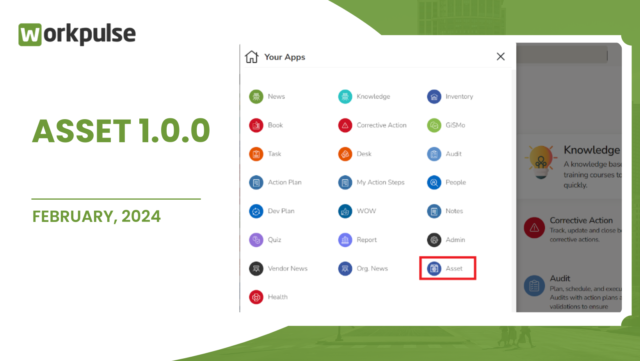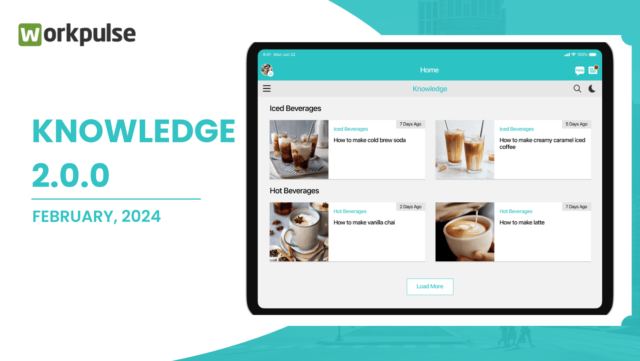Is your restaurant ready for any surprise inspection? One of the reasons why restaurant audits are feared is the lack of preparedness or audit readiness. With digital solutions for restaurant audit management available today, ensuring audit readiness is not difficult as long as you know how to plan, schedule, and conduct audits as per the guidelines. Gone are the days when paper forms, log books, and time-consuming data consolidation helped restaurants to understand the current state of compliance. Successful restaurants have leveraged technology to implement a robust restaurant audit program that gives them 100% visibility, enables them to ensure compliance, and gives them the tools to adhere to the brand promise.
The restaurant audit checklist
Before discussing the ways in which audit readiness can be ensured at restaurants, let’s take a look at the audit checklist. There may be some brand specific guidelines that require custom audits to be done. However, the following checklist comprises aspects that are common to all restaurants.
-
Food temperature control
- Restaurants have to use fresh produce to ensure the highest food safety standards. Perishable items such as fresh produce, dairy products, meat, etc. have to be stored at the recommended temperature to prevent them from spoiling. If, for some reason, a product has expired and is no longer suitable for use, then it has to be discarded. Additionally, all the items stored along with that product have to be tested for freshness and quality.
-
Food storage
- Temperature controlled storage spaces like refrigerators need to be maintained properly to ensure the safety of all food items stored in them. The ones without temperature control have to be kept dry, clean, cool and away from natural light. Another important aspect of storing food is labelling them appropriately with the “use-by-date” to know exactly when the food needs to be discarded for ensuring food safety.
-
Food preparation
- Restaurants need to have proper designated and hygienically maintained areas for washing and preparing food. In addition to maintaining the food preparation areas properly, it is important to train the employees for food handling and preparation. This would help to prevent any contamination in food caused by possible negligence.
-
Facility setup
- The facility should be set up and maintained as per the prescribed guidelines. Although the specific requirements may vary for each brand or organization, the basic aspects need to be implemented.
-
Employee hygiene
- Employees that are directly involved in food handling should be provided with hand washing facilities, disposable gloves, hair coverings, etc. This is a preventive measure to avoid food contamination. It is also important to keep lunch areas or recreational areas away from the food storage and processing facilities. These are basic guidelines meant to be followed by restaurants to ensure food safety.
-
Cleaning and sanitation
- Cleaning and sanitation need to be ensured not only for the food processing and preparation areas, but also for the entire restaurant. Any lapse in sanitation could lead to health issues for the employees as well as the guests.
-
Documentation
- All legal permits, nutrition information, and health relation information needs to be properly displayed in easy to access locations. Employees are also required to possess the mandated certifications for their respective work profiles (as defined by the local health departments). During a restaurant audit, these documents will also be verified as part of food quality and safety assurance.
5 steps to ensure audit readiness
Based on the real-world implementation of the Workpulse Restaurant Operating System in over 3000 QSRs, we have come up with the following steps to ensure audit readiness at any restaurant.
STEP #1: Review brand guidelines and regulations
Before you plan any audit, it is important that you review and understand the brand guidelines applicable for your restaurant. If you are a franchisee, then you need to follow the guidelines provided by the franchisor. Based on the guidelines, you can create audit checklists and questionnaires to ascertain the compliance level at your restaurant.
STEP #2: Implement SOPs for daily operations
Not every employee will be familiar with the entire SOPs for your restaurant. Using a manual approach to daily operations will not prove useful. The best way to approach this is to use a digital food safety and restaurant audit management solution where you can easily configure the SOPs and allow employees to follow the steps provided in the software. A digital solution will not only help you align the SOPs properly but also provide the necessary mechanism to track operations at the click of a button.
STEP #3: Create a food safety inspection regime
While restaurant audits comprise various checks, food safety still remains the most significant audit amongst others. In order to be prepared for any food safety inspection and to be compliant with the brand’s guidelines, you should implement a food safety inspection regime. The Workpulse Brand Standards and Food Safety Compliance solution allows the automation of tasks, assignment of corrective actions, and easy maintenance of required checklists from the convenience of a tablet or mobile device. You can track all tasks, completion rates, status of corrective actions and more without having to physically travel to each location to gather the information.
STEP #4: Plan and schedule audits
Don’t wait for the auditor to show up at your restaurant for an audit. Be prepared for any surprise inspection by planning and conducting audits regularly and resolving any issues that are identified. The Workpulse Restaurant Audit Management Solution allows audits to be created, scheduled, and managed easily. It also provides an option to get validation for the audits completed at any location. By proactively evaluating your restaurant’s compliance, you can ensure 100% audit readiness every time.
STEP #5: Leverage analytics to make decisions on time
The biggest advantage of using a digital solution for restaurant audit management is the availability of analytics and real time reporting. Not only can you get an instant overview of compliance for all restaurant locations, you can also track the status of action plans intended to resolve identified issues. Restaurant operators and franchisees can get 100% visibility into daily operations and compliance at the click of a button. With such advanced reporting and actionable data, you can make decisions on time and never be caught unprepared for any inspection.
Adhere to the brand promise with workpulse
3000+ QSRs are using the Workpulse Restaurant Audit Management solution to ensure compliance and exceed brand expectations. With powerful features such as custom audit creation, action plan management, tracking action steps, and real time monitoring, you can confidently adhere to the Brand Promise.
To learn how Workpulse can help you improve operations at your restaurant and help your employees perform better, schedule a consultation with us today.




